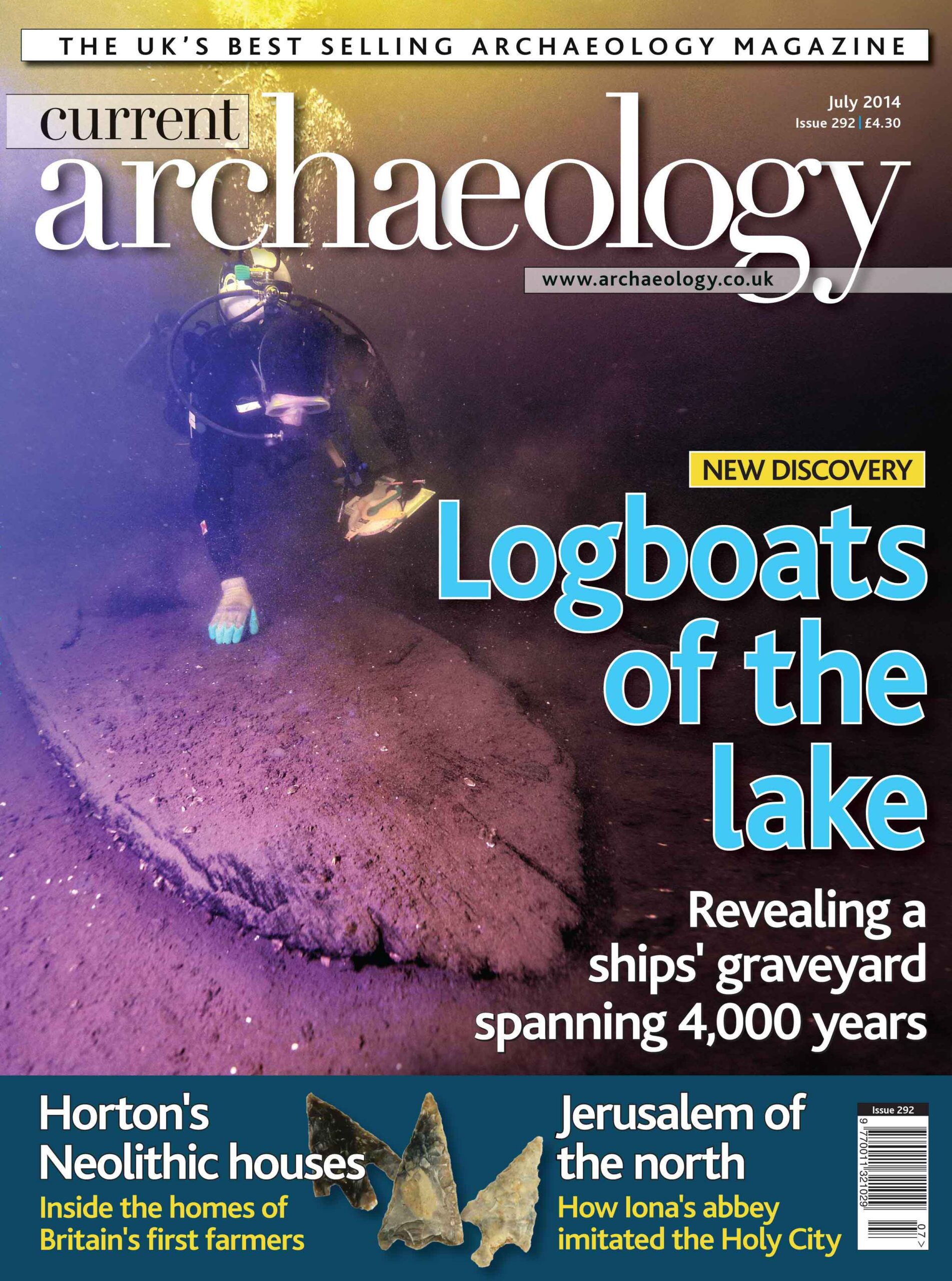An 11th-century jaunt across Lough Corrib, Co. Galway, in a sleek logboat ended in disaster. A mishap cracked the hull open, forcing the crew to abandon both their boat and the Viking-style war axes stowed on board. Now survey of the Lough has revealed that this vessel was neither the first, nor the last to be swamped by its waters. Archaeologists are discovering a lost fleet of vessels ‚ ranging from Bronze Age logboats to Victorian pleasure craft ‚ preserved in its depths.
Survey also yielded spectacular results on Solsbury Hill, where it virtually peeled back the turf to reveal a hillfort interior in startling clarity. The riot of features within betray the presence of a thriving settlement, but how are they to be interpreted, and what can they tell us about the hillfort’s role in the wider landscape?
Excavation plans of Kingsmead Quarry, Horton, are on a scale normally associated with survey. Over a decade of excavation has laid bare almost 34 hectares of a palimpsest landscape. Among its field systems and farmsteads lay at least four Early Neolithic houses. These remarkable survivals are shedding new light on life within hem, right down to the sweepings of their house-proud inhabitants.
On Iona, monastic table-scraps from around the time of St Columba have been on the archaeological menu. Typical high-status fodder such as venison shared kitchen space with a more local dish: seal. The monastery’s design, though, fed off more exotic archetypes. New research reveals how the brethren set out to build Jerusalem among Iona’s dark, panoramic hills.
FEATURES/n
ON SOLSBURY HILL/n
Seeing inside a hillfort
Geophysical surveys of a 20ha hilltop near Bath have given an intriguing perspective on the interior of this Iron Age structure.
HORTON’S NEOLITHIC HOUSES/n
Exploring a prehistoric landscape at Kingsmead Quarry
Over 10 years of excavations have revealed extensive evidence of a prehistoric landscape outside Windsor, including a cluster of Neolithic houses, and a burial containing some of Britain’s earliest gold ornaments.
IONA
/n
Exploring Scotland’s most sacred place
1,450 years after St Columba founded his monastery on Iona, a major research project has shed new light on a tiny settlement that became one of the most influential Christian centres in Medieval Europe.
ASPARAGUS IN THE ROMAN WORLD/n
Investigating Imperial eating habits
What did the Romans do for us? They introduced a number of delicacies that we now take for granted, including cherries, peaches, and asparagus. With asparagus season now underway, we explore how this crop flourished in Rome’s northern provinces.
NEWS/n
The die that struck Britain’s earliest coins?; Corieltauvi capital in Leicester; London’s Mesolithic moments; New dates for Vespasian’s Camp; Recently recorded Roman rarities.
Special report
The logboats in the lake
REGULARS/n
Festival of British Archaeology
Highlights from this year’s nationwide celebration of all things archaeological.
Reviews
The Oxford Handbook of the Archaeology of the Contemporary World; Masterpieces: Early Medieval Art; Roman Roads in North-West Wales
Sherds
Chris Catling’s irreverent take on heritage issues
Interview
CA talks to Fiona Hyslop, Scotland’s Cabinet Secretary for Culture and External Affairs, about the role of archaeology and archaeologists in modern Scotland, and her vision for its future.
Odd Socs
The Goodluck Mine Preservation Club

